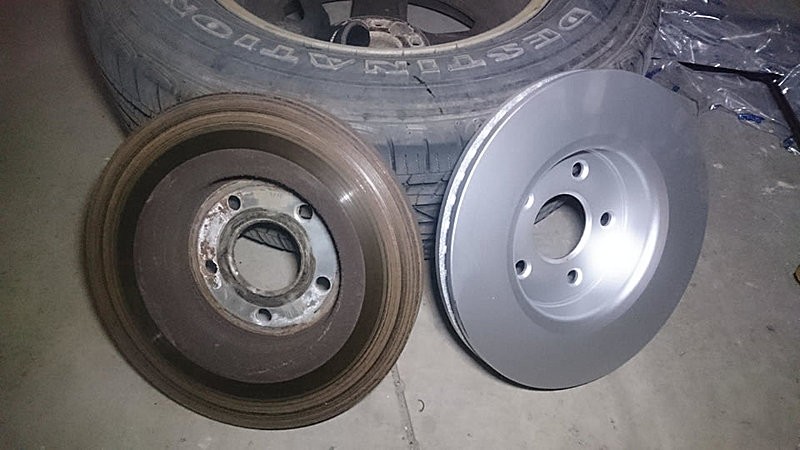Can you replace the brake pads without changing rotors?
January 01, 2020Well, it depends on the condition of your rotors. If the rotors are in good shape, it is really not necessary to replace the rotors on a brake job. This would obviously save your time and money.
 Inspect each rotor for damage, excessive wear, rust pitting, and glazing. Note, that there is a minimum rotor thickness - called the discard thickness, specified by a rotor or vehicle manufacturer. Discard thickness is a heat related dimension, and it implies that if a rotor is at or below its discard thickness it must be replaced as the rotor can no longer dissipate the heat generated during stopping. All good rotor brands have the discard thickness specified in their product documentation (Ex: Parts Specification for 2015 Honda Civic Rotors).
Inspect each rotor for damage, excessive wear, rust pitting, and glazing. Note, that there is a minimum rotor thickness - called the discard thickness, specified by a rotor or vehicle manufacturer. Discard thickness is a heat related dimension, and it implies that if a rotor is at or below its discard thickness it must be replaced as the rotor can no longer dissipate the heat generated during stopping. All good rotor brands have the discard thickness specified in their product documentation (Ex: Parts Specification for 2015 Honda Civic Rotors).
Old rotors could be warped, which causes the car to vibrate while stopping. You should replace the warped rotors. Excessive rust and pitting on the back side of the rotor would wear the new pads prematurely and unevenly, and it is also recommended to replace the rotor in this case.
The lightly worn/gauged rotors could be resurfaced on a lathe, granted that they haven’t yet reached their discard thickness. However, it is hard to find a shop with a brake lathe nowadays, and the machining time would cost similar to buying a brand new rotor under warranty. Warped or severely gauged rotors should be replaced, as they could not be properly resurfaced and the damage is likely permanent.
If you are unsure about the condition of your rotors you should get a professional advice or replace the rotors. It is always better to be safe than sorry, especially when it comes to breaks.
Pad Bedding: How to break in your new pads with old rotors
Now that you know your current rotors don’t need replacement, we should talk about the pad bedding – a critical procedure to break in the new pads while keeping the old rotors. If not done properly, it can cause the pulsation during breaking, putting the rotor in thermal shock and resulting in warping or stress cracking.
This is the recommended procedure to break in the new pads:
- 5 moderate to aggressive stops at 60 to 5 kmh without letting the brakes cool and do not come to a complete stop.
- Then 5 moderate stops at 40 to 5 km/h letting the rotors cool after each brake application. You may notice the smell of pad resin as the brakes get hot.
For the first 100 kilometers your new pads will complete the resin cure, and it is recommended to avoid towing or hauling heavy loads during that time.


